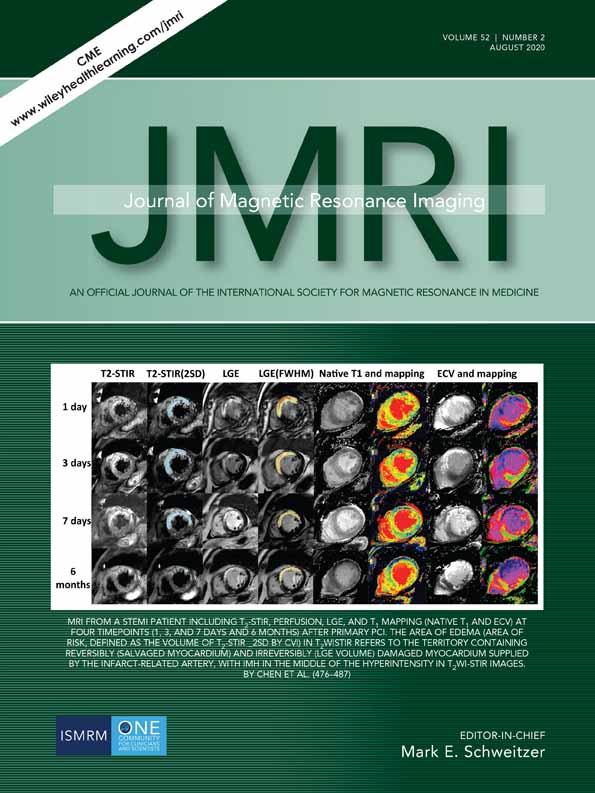MRI-Based Radiomics: Associations With the Recurrence-Free Survival of Patients With Hepatocellular Carcinoma Treated With Conventional Transcatheter Arterial Chemoembolization
Abstract
Background
Preoperative estimation of hepatocellular carcinoma (HCC) recurrence after conventional transcatheter arterial chemoembolization (c-TACE) is crucial for subsequent follow-up and therapy decisions.
Purpose
To evaluate the associations of radiomics models based on pretreatment contrast-enhanced MRI, a clinical-radiological model and a combined model with the recurrence-free survival (RFS) of patients with HCC after c-TACE, and to develop a radiomics nomogram for individual RFS estimations and risk stratification.
Study Type
Retrospective.
Population
In all, 184 consecutive HCC patients.
Field Strength/Sequence
1.5T or 3.0T, including T2WI, T1WI, and contrast-enhanced T1WI.
Assessment
All HCC patients were randomly divided into the training (n = 110) and validation datasets (n = 74). Radiomics signatures capturing intratumoral and peritumoral expansion (1, 3, and 5 mm) were constructed, and the radiomics models were set up using least absolute shrinkage and selection operator (LASSO) Cox regression. Clinical-radiological features were identified by univariate and multivariate Cox regression. The clinical-radiological model and the combined model fusing the radiomics signature with the clinical-radiological risk factors were developed by a multivariate Cox proportional hazard model. A radiomics nomogram derived from the combined model was established.
Statistical Tests
LASSO Cox regression, univariate and multivariate Cox regression, Kaplan–Meier analysis were performed. The discrimination performance of each model was quantified by the C-index.
Results
Among the different peritumoral expansion models, only the 3-mm peritumoral expansion model (C-index, 0.714) showed a comparable performance (P = 0.4087) to that of the portal venous phase intratumoral model (C-index, 0.727). The combined model showed the best performance and the C-index was 0.802. Kaplan–Meier analysis showed that the cutoff values of the combined model relative to a median value (1.7426) perfectly stratified these patients into high-risk and low-risk subgroups.
Data Conclusion
The combined model is more valuable than the clinical-radiological model or radiomics model alone for evaluating the RFS of HCC patients after c-TACE, and the radiomics nomogram can be used to preoperatively and individually estimate RFS.
Level of Evidence: 3
Technical Efficacy Stage: 4
J. Magn. Reson. Imaging 2020;52:461–473.
Conflict of Interest
The authors have no conflicts of interest to disclose.




